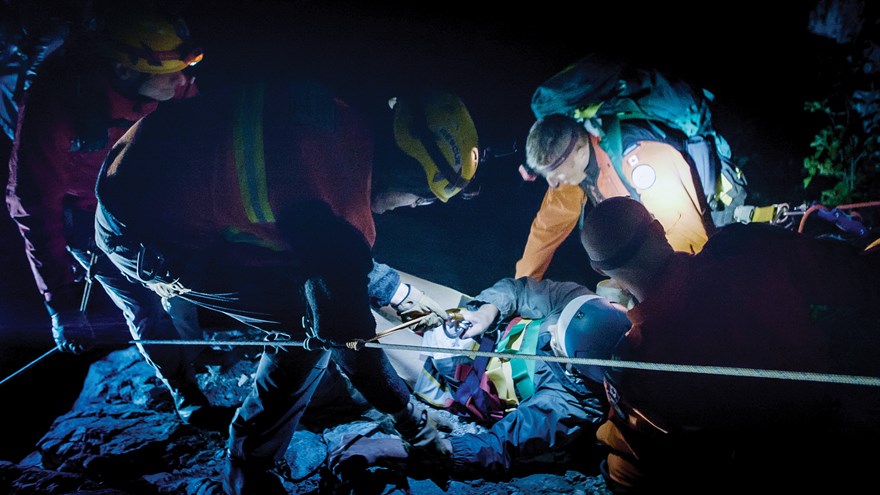North Shore Rescue members had to call in some help from above to save a severely injured man in the backcountry late Monday night.
Rescuers received a call around 7:30 p.m. reporting an injured hiker north of Crown Mountain.
The 50-year-old man had met up with a stranger on the trail earlier in the day and the two ventured to a peak known as the Camel, which requires using a rope to rappel down a cliff face. While they were on the return climb, the fatigued subject lost his grip on the rope and fell backwards roughly 10 metres.
“There was basically a scream and then 30 seconds of just silence,” said Mike Danks, North Shore Rescue team leader. “He continued to roll down that steep, rocky terrain. There is no cushion up there. It is just straight granite… . For us, right away we knew this was an all-hands-on-deck call.”
It was already too late to get a helicopter into the area before dark but search managers deployed a ground team to immediately begin the three-hour trek north of Grouse Mountain. The other hiker stayed with the injured man and kept rescuers apprised of his condition via phone. As the night went on, the man’s injuries worsened.
“He was starting to have sharp pains in is spleen, he was having increased pain in his lower back and his left leg was beginning to twitch,” Danks said.
At that point the Joint Rescue Co-ordination Centre in Victoria decided to send in a CH-149 Cormorant helicopter from Canadian Forces Base Comox.
“It sounded like, based on the fall and the symptoms, it was going to take longer to get him out than was advised. So the cormorant could speed things up because it can get in there at night,” said Capt. Stu Robertson. “They can hoist and have night-vision goggles.”
The Cormorant arrived around the same time as the NSR field team. Crews from the two teams worked together to package the patient and airlift him to a waiting ambulance at Vancouver International Airport. It took until 3 a.m. to get the injured man to safety.
The man who called 911 and the other North Shore Rescue volunteers had no choice but to hunker down for the night. They were picked up by another helicopter early Tuesday morning.
Calling in a Cormorant isn’t something taken lightly, Danks said. It was last done in 2012.
“It’s a very large aircraft with a huge downwash that is very hazardous in that terrain but patient care comes first. Luckily we do train with these guys annually. That makes a big difference,” he said. “For us to be able to work side-by-side with them, I think says a lot.”
The call underscores the important of hiking with a partner in the backcountry Danks said. And, the subject was lucky his newfound friend was able to get cell reception that far north. A satellite phone or GPS beacon should be considered for anyone going out of cell range, Danks added.
Danks said he was proud of how his team handled the highly strenuous call-out.
“It really speaks to their dedication to this community,” he said.



